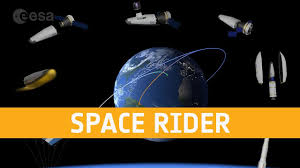
Breaking News
 China Will Close the Semiconductor Gap After EUV Lithography Breakthrough
China Will Close the Semiconductor Gap After EUV Lithography Breakthrough
 The Five Big Lies of Vaccinology
The Five Big Lies of Vaccinology
 Large global study analyzing data from 192 countries has sparked intense debate by suggesting...
Large global study analyzing data from 192 countries has sparked intense debate by suggesting...
Top Tech News
 EngineAI T800: Born to Disrupt! #EngineAI #robotics #newtechnology #newproduct
EngineAI T800: Born to Disrupt! #EngineAI #robotics #newtechnology #newproduct
 This Silicon Anode Breakthrough Could Mark A Turning Point For EV Batteries [Update]
This Silicon Anode Breakthrough Could Mark A Turning Point For EV Batteries [Update]
 Travel gadget promises to dry and iron your clothes – totally hands-free
Travel gadget promises to dry and iron your clothes – totally hands-free
 Perfect Aircrete, Kitchen Ingredients.
Perfect Aircrete, Kitchen Ingredients.
 Futuristic pixel-raising display lets you feel what's onscreen
Futuristic pixel-raising display lets you feel what's onscreen
 Cutting-Edge Facility Generates Pure Water and Hydrogen Fuel from Seawater for Mere Pennies
Cutting-Edge Facility Generates Pure Water and Hydrogen Fuel from Seawater for Mere Pennies
 This tiny dev board is packed with features for ambitious makers
This tiny dev board is packed with features for ambitious makers
 Scientists Discover Gel to Regrow Tooth Enamel
Scientists Discover Gel to Regrow Tooth Enamel
 Vitamin C and Dandelion Root Killing Cancer Cells -- as Former CDC Director Calls for COVID-19...
Vitamin C and Dandelion Root Killing Cancer Cells -- as Former CDC Director Calls for COVID-19...
 Galactic Brain: US firm plans space-based data centers, power grid to challenge China
Galactic Brain: US firm plans space-based data centers, power grid to challenge China
ESA's reusable Space Rider capsule would carry equipment to orbit and back

Blue Origin and SpaceX have made reusable rockets a reality, and now ESA has outlined a reusable Space Rider capsule, which would carry scientific equipment to the edge of space and back several times over.
Space Rider has its roots in ESA's Intermediate Experimental Vehicle (IXV), which performed a successful flight and re-entry test in 2015. The new capsule builds on that proof of concept, by adding a multi-purpose cargo bay that opens to space, landing gear for when it returns to Earth and a design that's been upgraded to ensure it can make the return trip at least five more times.
The capsule would be launched atop a Vega-C rocket and attached to an AVUM+ upper stage unit, which provides 600 watts of power and steers the craft once it's in orbit. The cargo bay can carry up equipment up to a maximum weight of 800 kg (1,763.7 lb) or volume of 1,200 liters (317 gal). The craft can then rotate itself depending on where the scientific payload needs to be pointed – it could for example, fly upside down if the equipment is intended to study the Earth, or sideways if the target is out in space.

 This is why RAM costs so much
This is why RAM costs so much

